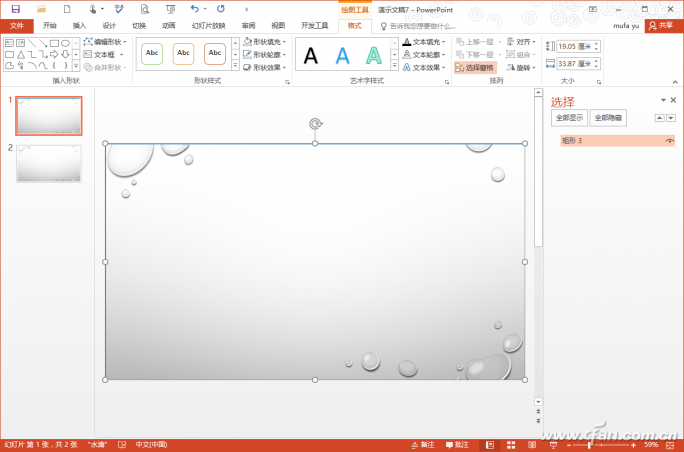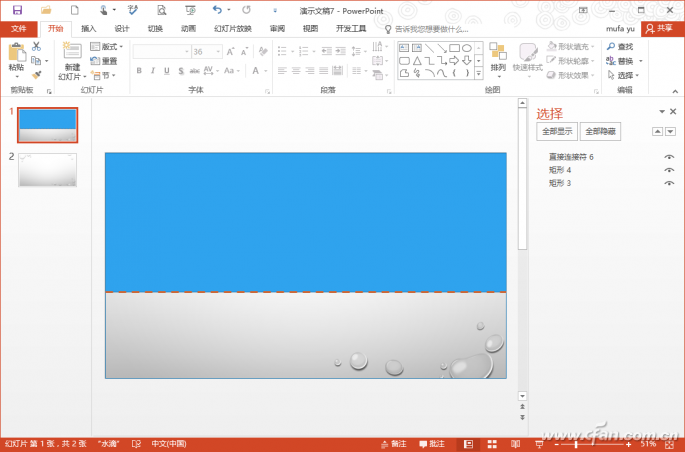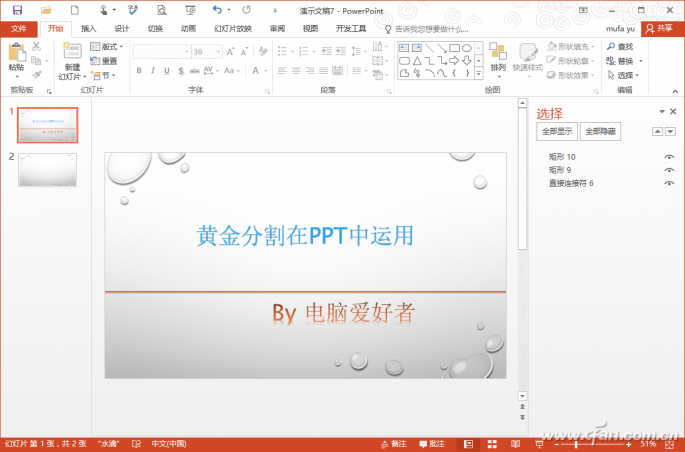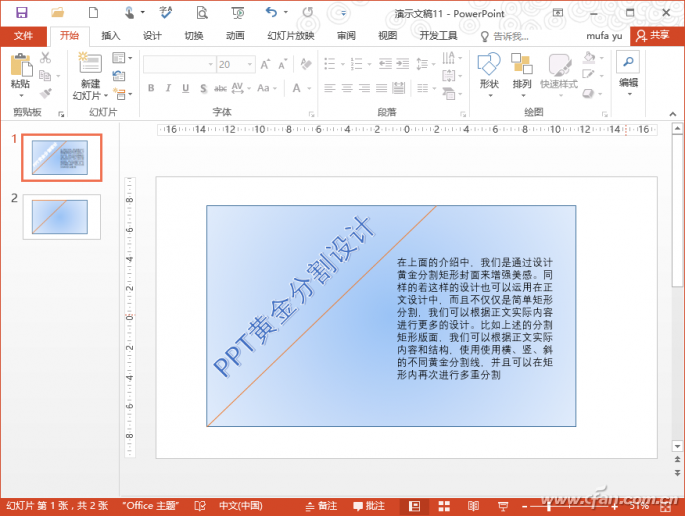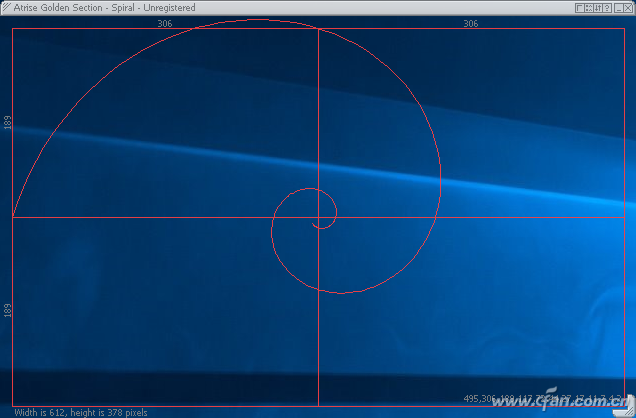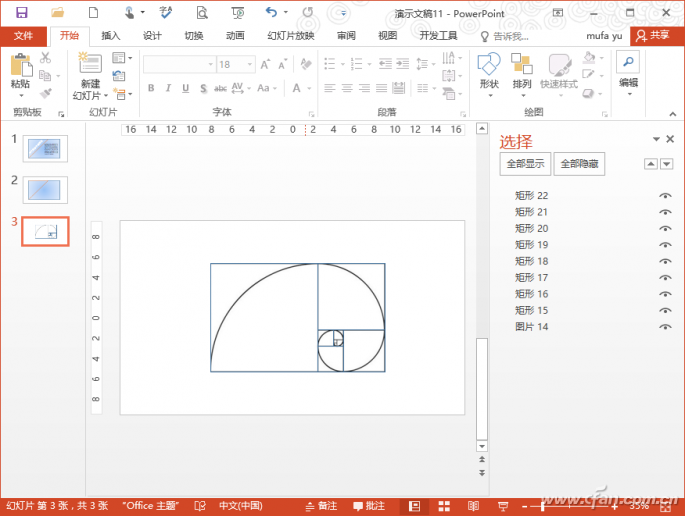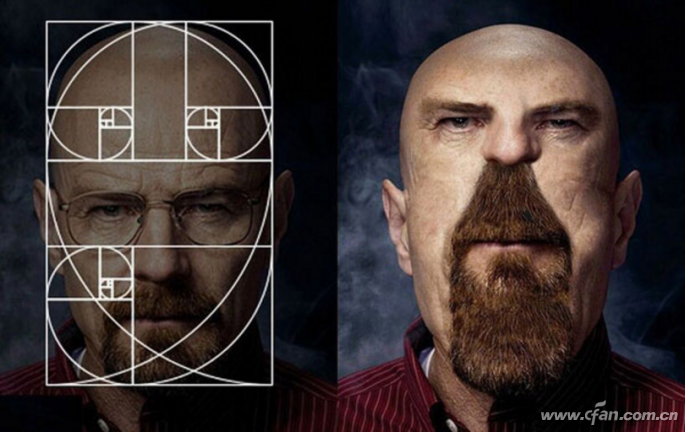Golden ratio, a concept deeply rooted in mathematics, refers to dividing a line segment into two parts such that the ratio of the whole to the longer part is the same as the ratio of the longer part to the shorter one. This proportion is approximately 0.618. While it's a mathematical principle, the golden ratio extends far beyond numbers—it can be a powerful tool in design, especially when creating visually appealing PowerPoint presentations. Simple Application: Creating a Golden Ratio PPT Cover The cover of a presentation serves as its first impression. To enhance visual appeal, you can apply the golden ratio by using golden lines as layout guides. For instance, many PPT covers use split rectangles, and inserting golden lines can help create a balanced and elegant layout. To begin, choose a suitable template and delete the default text placeholders by going to "Format → Select Pane" and pressing "Delete" on "Heading 1" and "Subtitle 2". Then, insert a rectangle that covers the entire slide background using "Insert → Rectangle", and set the fill to "None" for a transparent effect. Note the dimensions (Figure 1). Figure 1: Checking the rectangle size Next, create a second rectangle with a height of approximately 0.618 times the original. Align this rectangle with the top of the first one, then add a horizontal line at the bottom. This forms the golden line (Figure 2). Figure 2: Inserting the golden line Delete the two rectangles and add your title text. The result is a clean, golden-sectioned cover (Figure 3). Figure 3: Golden rectangle split cover Advanced Use: Applying Golden Ratio to Text Layouts Beyond just rectangular splits, the golden ratio can be used to structure text more effectively. You can experiment with horizontal, vertical, or even diagonal lines depending on the content. Multiple subdivisions within a single rectangle can also create dynamic layouts (Figure 4). Figure 4: Different combinations of split layouts For example, if you're working with a triangular layout, insert a rectangle and draw a line at 0.618 of its width. Align this line with the top edge and connect it to the lower corner. Rotate the text to match the angle of the hypotenuse, then place your content on the right side of the shape (Figure 5). Figure 5: Golden layout for text Additionally, you can use the Fibonacci spiral—a visual representation of the golden ratio—to guide your design. Tools like Atrise Golden Section can generate these spirals automatically. After generating a spiral, take a screenshot and paste it into your PPT. Then, use the spiral to guide the placement of rectangles, creating a harmonious layout (Figure 6). Figure 6: Generated golden spiral Once the spiral is in place, use the "Insert → Rectangle" function to align it with the spiral’s tangent points. This creates a composition of multiple golden rectangles (Figure 7). Figure 7: Golden spiral typography layout Finally, replace the rectangle backgrounds with images using "Format → Shape Fill → Picture". This allows you to create a visually striking image layout based on the golden ratio (Figure 8). Figure 8: Image layout using golden curves While precise calculations are useful, in real-world design, flexibility is key. Forcing the golden ratio without considering context can lead to unnatural results. For instance, applying it rigidly to face editing can produce unflattering outcomes (Figure 9). Therefore, when using the golden ratio in PPT design, always balance aesthetics with practicality. Figure 9: Unnatural result of forced golden section Electric Actuator,Heavy Duty Linear Actuator,Pneumatic Linear Actuator,Micro Linear Actuator Kunshan Zeitech Mechanical & Electrical Technology Co., Ltd , https://www.zeithe.com